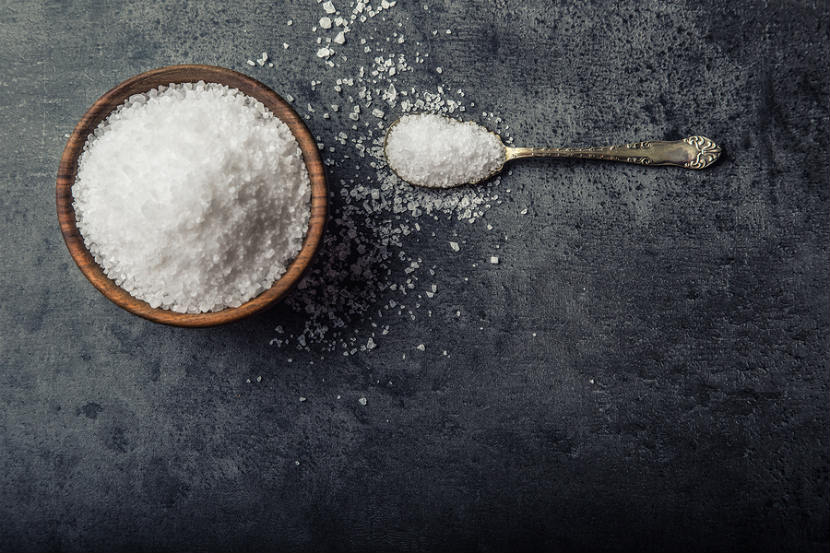
Most Canadians eat too much salt. Sodium, which is the main ingredient in salt, is needed by our bodies in certain amounts. But too much sodium can lead to health problems like high blood pressure, stroke, heart disease and kidney disease. Eating less sodium can help you and your family stay healthy and feel your best. Even if you don’t have high blood pressure, you can still benefit from lowering the amount of sodium you eat.
How much sodium should you have?
We all need some sodium, but most of us eat about 3400 mg per day. This is more than double the amount of sodium we need.
-
Adults need only 1500 mg of sodium per day. To reduce your risk of chronic disease, aim for less than 2300 mg of sodium per day.
-
Children need only 1000 to 1500 mg of sodium per day.
-
People with health conditions like high blood pressure or kidney disease may need to aim for lower sodium intakes and should follow the advice of their dietitian or healthcare provider.
Note: 1 teaspoon of table salt contains 2325 mg of sodium.
Which foods are high in sodium?
Over 75 percent of the sodium we eat comes from processed foods such as deli meats, pizza, sauces, soups and snack foods. Packaged and ready-to-eat foods, fast foods and restaurant meals are often high in sodium. Breads, breakfast cereals and bakery products also contain sodium even though they may not taste salty. Here is a list of some common foods which may contain higher levels of sodium:
-
Canned or packaged items: soups, stocks, cereal, baked beans, vegetable juices
-
Convenience items: seasoned pasta and rice mixes, stews, spaghetti sauce, seasoning mixes, frozen dinners, muffins, instant noodles
-
Jarred foods preserved in salt: pickles, relishes, olives, sauerkraut, kimchi
-
Condiments and sauces: ketchup, mustard, relish, soy sauce, teriyaki sauce
-
Processed meats: salt-cured ham, bacon, hot dogs, sausages, cold cuts, smoked meats
-
Cheese: processed cheese, cheese spreads
-
Salted snack foods: chips, pretzels, crackers, popcorn, trail mix, nuts
What about sea salt? Is it a better choice?
Sea salt also contains sodium so you should also moderate your intake of sea salt.
Tips for lowering your sodium intake
At the Grocery Store: Buy lower sodium foods to prepare meals at home.
-
Read the label on food packages. Buy unsalted and lower sodium foods whenever possible.
-
Compare food labels. Buy the products with the lowest amounts of sodium.
-
Look for foods that contain less than 200 mg of sodium per serving.
-
Look for products with a sodium content of less than 15% DV (Daily Value).
-
Look for canned and jarred foods with “no added salt or sodium”.
-
Plan meals using Canada’s Food Guide.
At Home: Prepare your own meals often, using little or no salt.
-
Make your own soups, sauces and salad dressings. Try Swiss chard and navy bean soup.
-
Enjoy more vegetables and fruit. Use fresh or frozen or “no salt added” canned vegetables when possible.
-
Cook pasta, rice or hot cereal without adding salt.
-
Rinse canned vegetables and canned beans, peas and lentils to wash away some of the sodium.
-
Taste your food before adding salt. Flavour food with lemon juice, herbs and spices.
Eating Out: Choose wisely when eating out.
-
Order smaller portions or share with someone.
-
Ask for gravy, sauces and salad dressings “on the side” and use only small amounts.
-
Flavour your food with lemon or pepper instead of adding salt, sauces or gravy.
-
Ask for your meal to be cooked with less salt
-
Check the nutrition information of menu items before you order and choose foods with less sodium.
Learn more about high blood pressure (hypertension):
How can a dietitian help?
A dietitian can help you choose foods and meals with less sodium. If you have high blood pressure, a dietitian can work with you to develop a personalized meal plan that considers your medical history, lifestyle, culture, goals and more. Connect with a dietitian today!
Bottom line
Most Canadians eat too much sodium. Eating too much sodium can lead to health conditions like high blood pressure and kidney disease. By making healthier choices when grocery shopping, cooking at home and eating out, you can help lower the amount of sodium you and your family eats and lower the risk of health conditions linked to high sodium intakes.
You may also be interested in:
Get the scoop on salt
28 Cooking Tips for Heart Month
Top 5 Reasons to See a Dietitian
This article was written and reviewed by dietitians from Dietitians of Canada. The advice in this article is intended as general information and should not replace advice given by your dietitian or healthcare provider.
Last Update – December 7, 2022